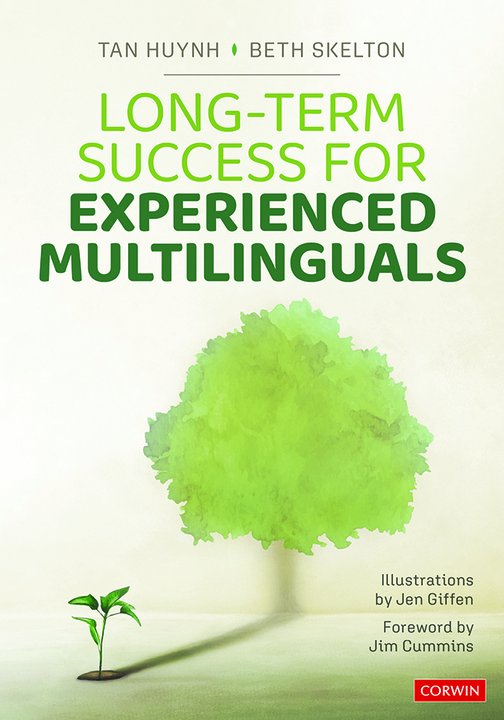Scaffolding for Experienced English Language Learners
In higher grades, multilingual students need to develop a grasp of academic English. Here’s how to help them acquire the skills they need.
Your content has been saved!
Go to My Saved Content.Min Woo walks into his favorite class, math, sits down next to his partner, and reaches into his backpack for the folder with the papers for their current project. They are learning to think like city planners by using angles and lines to plan out the roads and buildings for a new city. Mr. Nguyen, the seventh-grade math teacher, greets each student by name at the door. When the bell rings, he gestures to the board where the next step for the project is posted.
To get the class started with the next step in their city planning project, he tells them to read the prompt with their partners, making sure to restate the directions in their own words or ask each other questions about the prompt. Min Woo reads aloud, “Draw at least two parallel streets and two transversal streets to form acute and obtuse angles.” Puzzled, he asks his partner, “What does transversal mean?” His partner points up to the poster on the wall with labeled angles and lines. They study the poster and then start talking about how they want to draw the parallel and transversal lines for their city streets. When Mr. Nguyen calls the class back from their discussion, Min Woo and his partner are ready for the next step.
Mr. Nguyen knows that several of the students in his math class are still classified as English learners, even though they have been in the school district for many years. Because he wants all students to experience success in his math classes, he thoughtfully provides content instruction with scaffolds for academic language development.

In the lesson described in the previous paragraph, Mr. Nguyen used the following scaffolds:
- Labeled visuals
- Time for partner discussions
- Step-by-step instructions for solving problems
- Chunking the final performance assessment project into shorter daily tasks
None of these scaffolds “water down” the grade-level expectations of the lesson but rather provide the necessary support so that experienced multilinguals can meet these high expectations. In fact, providing the right scaffolds at the right time exemplifies equitable learning. In the hands of a skillful teacher, scaffolds stretch students’ skills, proficiency, and confidence.
Since most of the experienced multilinguals in his class no longer receive any direct, specialized English instruction, Mr. Nguyen knows he not only has to teach the math curriculum but also the academic English skills required to process and communicate the math-specific ideas.
If teachers provide appropriate scaffolds, experienced multilinguals like Min Woo are capable of learning new content in English in grade-level content classes. As experienced multilinguals reach higher levels of English proficiency, their English development needs become less obvious, but the academic language demands continue to increase.
For many learners, these increasingly challenging academic language demands make them feel like they have finally reached an apparent summit on the mountain only to discover another higher peak ahead. Scaffolds give them support to reach the highest peak, even as the trail gets more difficult.
Some experienced multilingual students like Min Woo have greater proficiency in spoken English than in reading and writing in English. Therefore, when they answer questions and participate in class discussions, teachers may assume they will also be successful on the written exam. However, when these students do not perform as expected, some teachers may be tempted to label them as “lazy,” “unmotivated,” or “unfocused.” We offer a different way of thinking about these responses and provide a framework that will address the academic language needs of these students in every content class.
We introduce the concept of academic language and advocate for teaching this type of language meaningfully within the context of the content classroom. Experienced multilinguals need high grade-level expectations coupled with high support to engage in content classes. In addition to teaching complex content and the academic language of each discipline, we suggest that experienced multilinguals benefit from explicit instruction in effective learning strategies. These strategies help students learn, transfer skills to other content areas, and become more independent learners. We share several of these learning strategies, which are anything a student does to boost their understanding of new content and use of academic language. Finally, we provide an overview of our framework for designing equitable content instruction that supports and stretches experienced multilinguals as they develop academic language proficiency across the curriculum. This framework serves as the outline for the rest of the book.
Academic language is more than just vocabulary words. It includes complex sentence structures, transition phrases, and organizational patterns used for different purposes like writing lab reports, arguing a claim, or analyzing a poem. Each of these purposes requires students to use academic language differently (WIDA, 2020). When students learn the language to justify their choices of lines and angles in math class, they can transfer that language to justify choices in science or language arts class. Teaching this cross-disciplinary academic language helps students succeed in the long-term.
Honigsfeld (2019) explains that academic language is “not something students have or do not have; it is something all students use daily to learn” (p. 49). While experienced multilinguals have generally acquired the ability to communicate clearly in most social situations, they are still developing the ability to use academic English. Developing this “academic language proficiency helps students achieve long-term success at school” (Dutro & Moran, 2002, p. 231).
Experienced multilinguals may also have different linguistic abilities in different fields and content areas (Walqui & van Lier, 2010). One experienced multilingual student may find the most success in a math class, while others triumph in social studies, sciences, or the arts.
The various dimensions of academic language are often described through an architectural metaphor (Dutro & Moran, 2002; Zwiers, 2008). The first dimension—vocabulary words and phrases—is like the bricks that form the foundation of the structure or text. Next, the sentence structures are like the mortar that connects the bricks to form the walls of that building or academic work. In the next dimension, the organizational features such as transition phrases and paragraphing conventions are like the roof, windows, doors, and interior design. As economics teacher David Carney says, “If students don’t write with academic phrases and organization, their essays read like a pile of bricks; there is no cohesion” (D. Carney, personal communication, February 2022).
Finally, the context for the written or spoken project is like the neighborhood or community, in which the structure is located. Students need explicit instruction in each dimension of discipline-specific language in order to succeed on classroom assignments and assessments.The bricks in Min Woo’s math lesson are the words and phrases used to describe the angles and lines. The walls of this lesson are formed with the sentences that explain the relationships between the lines and angles. Finally, the entire house structure will be completed when he organizes his presentation. The purpose of the presentation will be to explain the location of each line. He will have to justify the layout of his street map to the audience. The context or audience for this project is the presentation to the town council. As apprentice city planners in the math class, Min Woo and his classmates will develop mathematical reasoning as well as the mathematical-specific language needed to share their developing understanding.
When Mr. Nguyen asks students to justify their choices for placing the lines and angles on the city map, the sentence structures and organization they use must justify their decisions, not just describe the lines and angles. As math teacher and author Molina (2012) writes, “the phrase ‘the problem with math is English’ applies to all students, not just those whose native language is not English” (p. 1). Therefore, all students in the class will benefit from explicit instruction in using math-specific academic language to be successful engaging with this project.
From Long-Term Success for Experienced Multilinguals (pp. 36-42) by Tan K. Huynh and Beth Skelton, Thousand Oaks, CA: Corwin Press. Copyright © 2023. All rights reserved. (Readers in the U.S. and Canada can save 20 percent when buying the book by using that link and the code SAVE20.)
